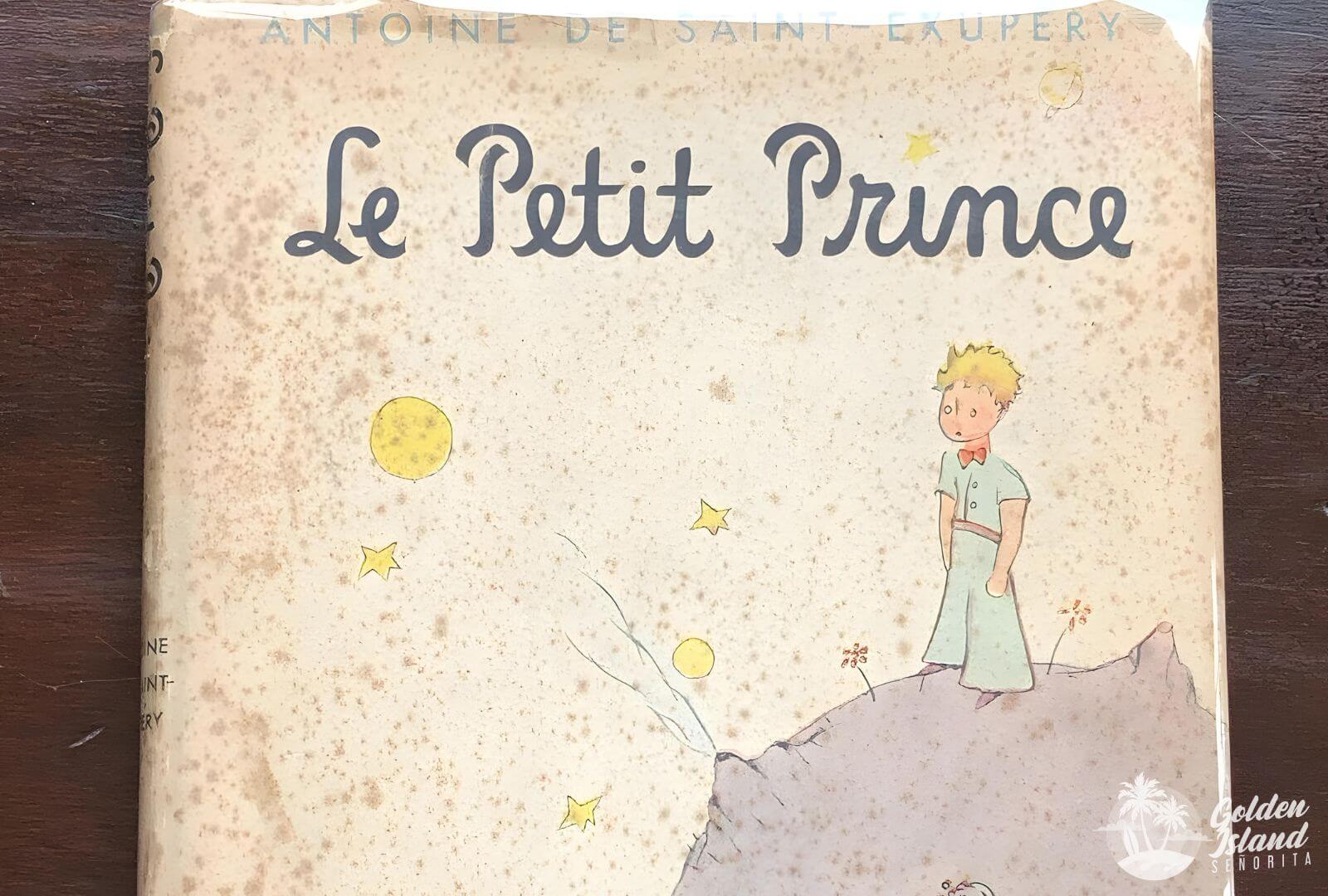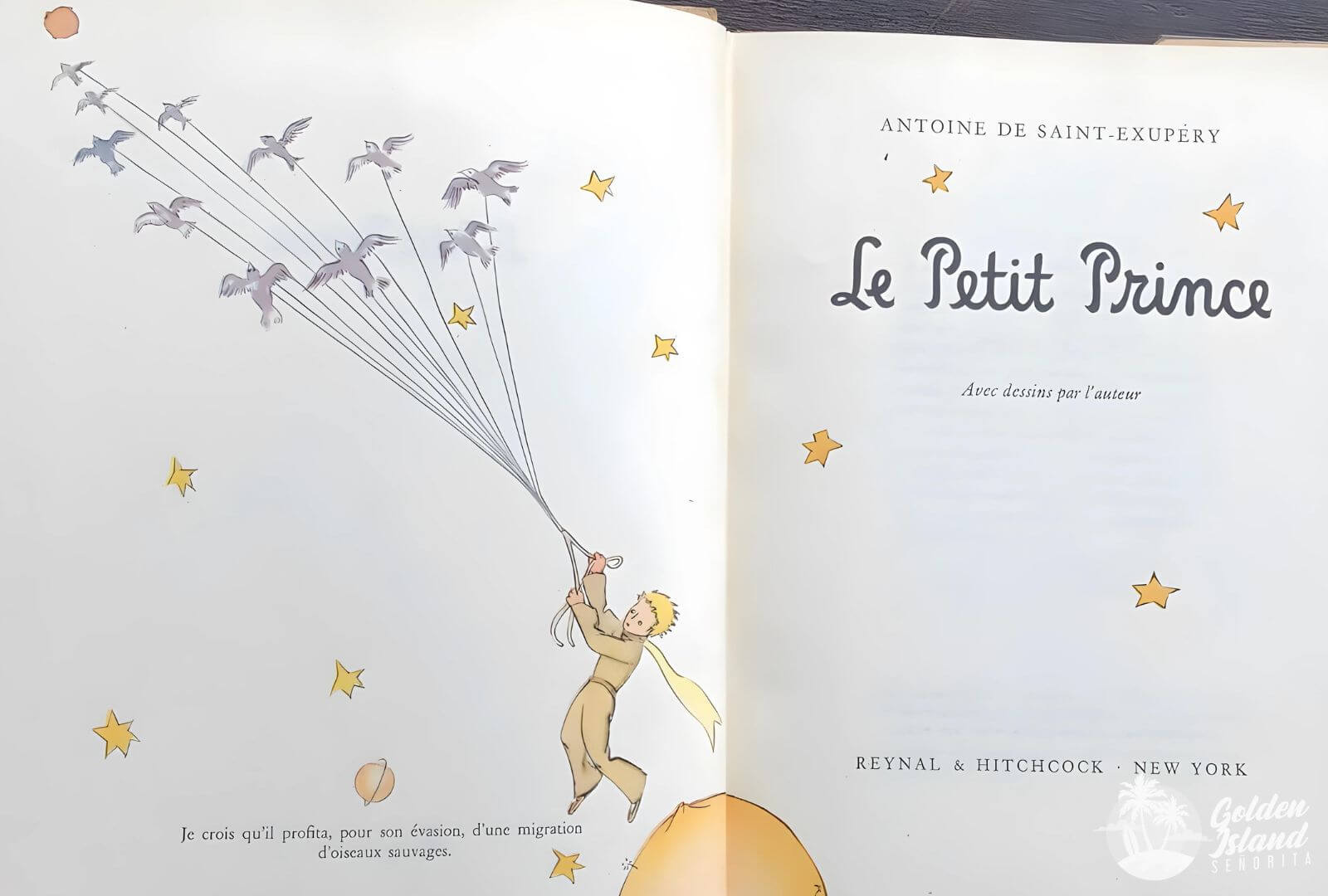Reading The Little Prince as an adult was such a strange experience. I remember reading this as a kindergarten, my mother gave me a copy and insisted I read it, and I only remember hating it, and that it made me cry. In grade 1, I remember telling my mom how I wanted to be an astronaut so I could travel to Asteroid B-612 and I wanted to have a fox. I also remember laughing a few times. The almost condescending attitude towards adults and the jokes at their expense makes this book appealing to kids since they can relate to being baffled by grown-ups.
But as I’m laughing at the crazy adults and the crazy things they do, I had to stop for a second as it sank in that I do those crazy things, too. I found myself reflecting on the deeper story behind this prince and his adorable travels to different planets. The little prince’s complete bewilderment at the behavior of adults challenged the way I think in so many ways.
The Little Prince: Plot
Antoine de Saint-Exupéry’s 1943 mega-seller classic, The Little Prince, has inspired cultic devotion. It’s been translated from the original French into some 250 languages and dialects and has been selling over 1.8 million copies a year. It has inspired films, sequels, a Japanese museum, and works of opera and ballet.
The narrator begins the tale with an explanation of his disappointment with and dislike of adults. He believes they are very strange and way too practical.
“I have spent lots of time with grown-ups. I have seen them at close range…which hasn’t much improved my opinion of them.”
When the narrator was six, he wanted to be an artist. He saw a magnificent picture in a book about a boa constrictor swallowing a wild beast. The book said that constrictors swallow their prey whole, without chewing, and then sleep for the six months of their digestion. The narrator was so fascinated by this that he decided to draw the ‘outside’ of the boa constrictor during his digestion period after it had swallowed an elephant. When he showed his picture with pride to adults, they rejected it and said it simply looked like a hat. So the narrator then drew the inside of the boa constrictor so the adults could understand.
Sadly the adults were just as disinterested and instructed him to put away his drawings and concentrate on more important things.
“Grown-ups never understand anything by themselves, and it is exhausting for children to have to provide explanations over and over again.”
As the narrator grew from boy to man, his chosen profession was to pilot airplanes. He next tells of how his plane crashed in the Sahara desert, where he met the Little Prince, a mystical boy from another planet, asteroid B-612. The narrator tells why the Prince left his planet and where he visited before coming to Earth. His adventures on different planets are recounted, including encounters with a king, a very vain man, a drunkard, a businessman, a lamplighter, and a geographer.
The narrator and the Prince share a rewarding relationship in the desert, and when the Little Prince departs, the narrator misses his company. He writes the novel in memory of the Little Prince. At the end of the book, the reader is instructed to send word immediately should The Little Prince return.

The Little Prince: Review
The Little Prince is a beautifully illustrated novella for children, written for grown-ups. It can be read on many different levels to provide pleasure and food for thought for readers of all ages.
The narrator — an aviator who crashes in the desert as Saint-Exupéry once did — aspires to the condition of childhood because grown-ups, in his view, can’t see past the surface of things. The prince has that gift of seeing: with each of his encounters he recognizes the planet’s types; he even teaches the narrator to see. Each planet the Little Prince visits can be seen as an allegory of human nature.
“All grown-ups were once children…but only a few of them remember it.”
All his life, Saint-Exupéry thought that grown-ups cared mostly about inconsequential matters, such as golf and neckties. When they talked about important matters, they always became dull and boring. They seemed afraid to open up their hearts to the real issues of life; instead, they chose to function on a surface level.
The Little Prince’s lasting appeal has been guaranteed by its sometimes complex philosophical themes: about the nature of friendship, the search for knowledge, and the loss of innocence.
The Little Prince: The Collection
I am obsessed with languages and I’m currently studying Spanish! Being a multilingual himself, the boyfriend guided me through the learning process. His native tongue is French but he speaks fluent English, German, Spanish and Italian. He’s provided me with books, and even articles from newspapers. Even suggested movies and songs to listen to. One of the books is El Principito the Spanish translation of The Little Prince.
I only started collecting The Little Prince last year. I already have the English and Filipino translations but around January, my boyfriend sent me his copy in French. I don’t know how he pulled it off but he was able to get the Russian, Italian, Spanish translations, and more.
Since I couldn’t travel yet due to restrictions I indulge and immerse myself in different languages. The plan is to get myself familiar with each – and to study more (Finnish, Italian, and Dutch).




Did you enjoy The Little Prince as a kid? Would you recommend it to your children (or niece or nephews)? Have you considered picking up a new language? If yes, what language and why? Let me know in the comments below!


I did not read the book growing up but i watched the movie and my kids and i absolutely love it!
I would love to read this to my children!